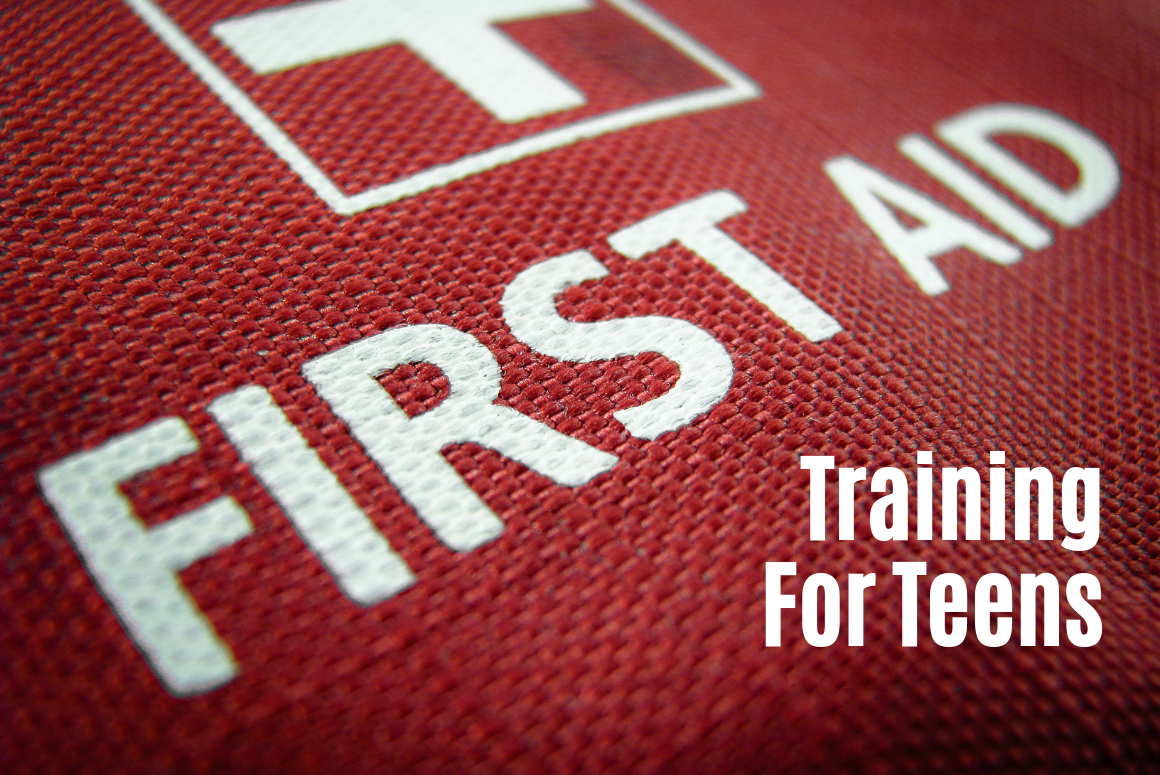We don’t have to tell you how important first aid training is for anyone – at the very least it’s a skill that’s valuable in almost any situation, and in any walk of life. There’s plenty of training available for adults looking to learn a new skill or re-certify themselves – the American Red Cross and St. John Ambulance are two! – and there are also many situations where a young person may need to provide first aid to a friend, stranger, or even themselves. Equipping them with the skills they need to respond to an emergency can mean the difference between life and death, so here’s more about First Aid Training for Teens that you can share with your family and support network.
Be Prepared
Consider providing your teen with formal first aid training. While it can be done online or in person, the best training for first aid skills are in person – by making training scenarios relevant to teenagers means they’re more likely to retain information and respond quickly when they’re faced with a real emergency. General topics can include:
- General First Aid education, including how to take action in an emergency
- What to put in a First Aid Kit and how to use the individual items in one – essential items include a list of emergency phone numbers, bandages, gauze pads, adhesive tape, antiseptic wipes, antibiotic ointment, and pain relievers (acetaminophen and ibuprofen)
- Communication and which information to provide when contacting emergency services
- What to do when someone is unresponsive and breathing
- How to put someone in the recovery position
- What to do when someone is unconscious and not breathing – resuscitation CPR (and the different techniques for adults, babies, and children)
- Choking, including how this differs for adults, babies, and small children
- How to manage medical emergencies such as severe bleeding, medical conditions, burns, and poisoning
Babysitting training or certification is a great way to introduce teens to first aid, because it is incorporated alongside other vital training for young adults looking after other children. These elements keep teenagers mindful of their environment so that they can prevent emergencies as much as possible. Many organizations offer babysitting certification, which covers:
- Setting and following rules around safety when alone
- Being aware of safety hazards and practicing injury prevention
- Coping with emergencies and unexpected situations
- Providing basic first aid
Know How To Respond
There are some great apps to help educate your teens, and support them in an emergency – both the American Red Cross and the Canadian Red Cross have First Aid Apps. However, teenagers should be familiar with some of the most common emergencies so they know what to do to support a victim in need, without worrying about their phone:
- Control bleeding: Put direct pressure on a wound (this is where the gauze pads in a first aid kit help!), elevate the wound above the victim’s heart, use pressure points, and know when to use a tourniquet to stop bleeding.
- Stop, Drop, & Roll: If someone’s clothes catch fire, tell them to STOP – movement fans flames and can cause burns to be more severe; DROP – the more a body is in contact with the ground the better, and make sure to cover the face with hands; and ROLL – this will smother the flames by depriving them of oxygen.
- Treat a burn: Always cool a burn with water (cool, not cold) before covering it with a clean bandage or cloth. If you suspect that someone has a severe burn, seek medical attention right away.
- Perform CPR: If someone is unconscious and not breathing, CPR should be the first course of action. Even if your teen hasn’t had formal CPR training, they should familiarize themselves with hands-only CPR – it’s better than not helping at all!
- Call Poison Control: While some poisonings are more dangerous than others (cleaning supplies, lighter fluid, medications), it’s important to remember that may substances can be surprisingly dangerous when ingested. Keep the Poison Control number accessible (program it into everyone’s phones) and make sure your teen knows to call them any time they suspect someone has been poisoned, including themselves.
For more on First Aid and CPR training, check out our other resources:
- First Aid & CPR For Children
- 5 Reasons You Should Learn CPR
- 10 Facts About CPR and First Aid Training
- Guest Blog: 5 Reasons You Should Take a CPR/First Aid Course
Terms and Conditions
All content provided on this blog is for informational purposes only. The owner of this blog makes no representations as to the accuracy or completeness of any information on this site or found by following any link on this site. The owner will not be liable for any errors or omissions in this information nor for the availability of this information. The owner will not be liable for any losses, injuries, or damages from the display or use of this information. This policy is subject to change at anytime.

